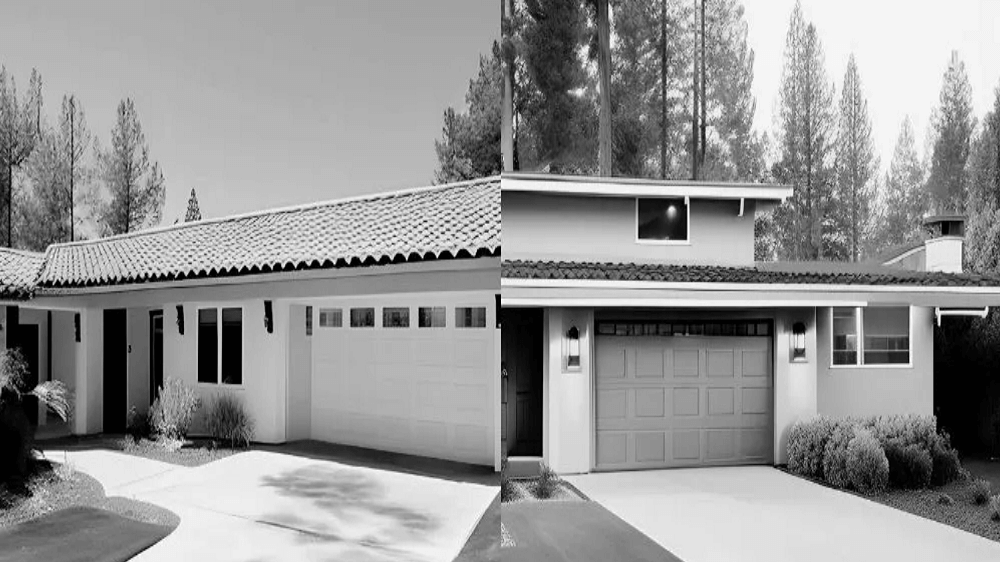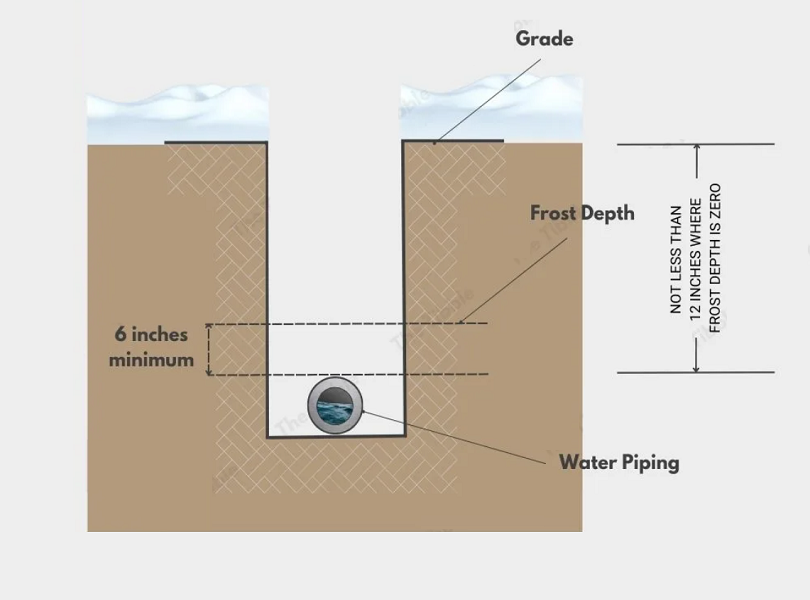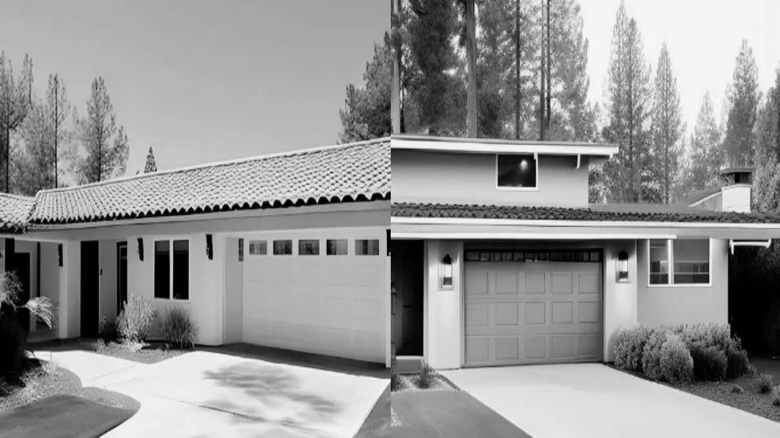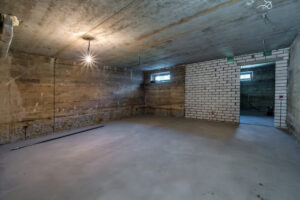Basements are considered as standard in America, so if you are going to California, you might be confused by watching the basements that California has. Traditionally, in California houses have a small area below the house that can be used for large appliances rather than basements and here are some main reasons why.
Quick Answer:
California homes usually do not have basements. There can be a misunderstanding as a safety measure for seismic activity but in reality, if you follow the code to build them, they are safe. The reasons depend on post-World War II housing development, expense, frost lines, and tradition.
1. Post-War Houses Needed Immediate Construction
After the end of World War II and associated social and economic changes, the demand for housing increased which boosted the construction which caused the industry’s focus to shift to mass production.
Housing and construction industries were also included.

The building boom is one of the main reasons why Californian houses are so small.
It needed extra steps to add a basement that slowed down the construction.
Basements are often designed to offer additional living space or bedrooms for big families. However, the end of World War II gave rise to the beginning of the suburban sprawl.
The population became prominent in land area and the demand to increase the living space per unit of land area was decreased.

2. Misconceptions About Earthquakes and Basements
There was a misconception about the lack of basements in California that it had to do with the fact that earthquakes are pretty common in that state. In reality, there is no evidence of it but some people still think about it.
The reason why people assumed it was that with the movement of the earth and the structure of an underground room would be readily compromised.
It does make a sense that is the reason why this myth was present for so long. However, there are different methods that can use to build basements that maintain structural integrity where the surface of the earth remains busy.
To prove this point, we can read the building codes of California.
Section R401 of the California Residential Code says that the foundation and basement constructions must follow the local engineering standards and practices. The structure must be built keeping in view the flooding and to support soil loads too.
Section R402 also focuses on strength, quality, concrete materials and treatment of wood to construct a basement.
If basements were not safe in California, then California Residential Code (which aims at maintaining the safety and health of buildings) would clearly say that they are not allowed.
Basements may need special finishes and construction supports for the act of God (seismic activity) in California, but officially, it does not have an issue with a basement.
3. Frost Line Is Not Deep
States with deep frost lines often contain basements.
The IRC Section R403.1.4.1 states that the building supports and foundations must be secured from frost and one way to deal with it is by extending them beyond the frost line. If you have foundations that are above the frost line, it will degrade.
With the constant shifting of the ground due to temperature changes, your foundation will be in trouble. It will cause the cracking and with it, water will leak into your basement or the foundation walls as well as floor.
This causes structural and water damage, which gets worse with time, and you will experience a large and costly project that is, redo your house’s foundations.
You also need to keep your water pipes secure from frost and it can also be done by burying them below the frost line. Frozen water pipes can leak and crack, causing the water to waste, leading to high power bills and water damage.

The depth required for the pipes and foundations makes it easier to include extra living space below ground in order to give enough access and use the space in a proper way.
In California, the climate remains warm which creates a shallow frost line. You do not have to go through the digging so deep to secure the foundations and pipes, so construction of a basement is necessary to enjoy the benefit of the basement.
That is the reason the expense is often regarded as unnecessary in California.
4. Basements Are Costly
You are already digging that will bury the pipes and foundations, basements can cause a big hole in your pocket.
A full, unfinished basement can cost you approximately $40,000. So, you will lose a lot of money due to this step.
Additionally, if you want to build the basement, you may want to complete it in order to use as additional living space.
To finish your basement for use as a living area or finished garage, you need a permit which will add more cost including the cost of permits and work required for it. The finishing of the basement can take between $22,000-$46,000.
As you can see, it is a large price to pay if basement is not suitable for your climate.
Often Cheaper to Add Space Aboveground
A basement area can offer different benefits: a laundry room, suite/bedroom, family room or garage. However, if basements are not standard parts of house construction in your region, adding the space aboveground will be cheaper.
For instance, in California, the average cost of building a garage is $44,210. It means that the professional construction of an aboveground garage will cost half as compared to constructing a basement and turn it into a garage.
If you want to do it yourself, the cost will be only on purchasing the materials, which can be between $5,000-$25,000.
5. Californian Climate Makes Insulation Difficult
California is a state that is hot and desert-like which can cause the temperatures to rise during the day and drop significantly at night.
There are a lot of laws applied to California that need insulation of foundation walls and cavities including basements. It is to help with energy-saving.
There are some difficult features to insulating a Californian home in a better way.
Insulation needs to enable cooling during hot days and holding heat to manage cool nights. It means that you have to choose the insulation you use carefully.
6. No Basement Has Started to be the Traditional Design
In California, basements are not necessary and they are not included in home designs during the housing boom, having no basements has become the standard.
It is also less pricey and time-consuming for contractors to avoid digging holes for basements and maintaining the tools. They also have to face waterproofing which is another hard procedure.
So, it is costly to build a basement for both the homeowner as well as the contractors, with the passage of time, California has maintained the norm of building houses without basements.
A few contractors will even think that while planning until you request it.
Are Basements Illegal in California?
No, basements are not illegal in California. They are available in the state building codes, so they would not be considered as illegal.
However, in some situations, basements can be illegal.
The old owners may have retrofitted them in the property. If the basement was built without approval and permits or completed without a permit, you might end up with an illegal basement.
You may be able to receive a retrospective permit in order to convert it to a legal one. But the process needs inspection which can also result in other situations in which they are considered illegal in California.
If you managed to get a permit for your basement, but its construction conflicts with the building codes, it will be illegal. Now, the permit is supposed to be code-compliant, but cases can get into them.
What Is A “California Basement”?
In this article, I mentioned in the beginning that Californian homes contain small areas below the house for extra storage space. It is called a California basement.
A California basement is known as a faux or mini basement. In fact, it is an excavated hole that sits under the ground floor of your house. It is not available in the entirety of the foundation, and it would be impossible to use as a living basement.
California basements are designed for pipes, appliances and ductwork, so it saves space in the house but useless beyond that.
This type of basement cannot be converted into a living space, as it would be big enough. These rooms are also designed without keeping habitation in mind. It is without a proper sealing and sufficient space for movement.
Usually, California basement may have boilers and furnaces. Australia and England are the other countries where basements are rare. There are many causes of it, but only some of them are right.



